
Blooming Beauties Best Cherry Blossom Spots Your Kids & the Digital a ge An app-by-app breakdown Check out our special chilD Resources! April 2024 rockl AndpArent.com







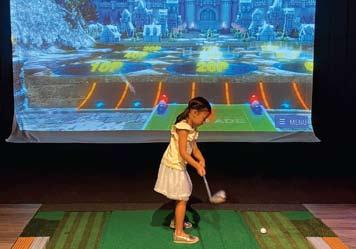



Palisades

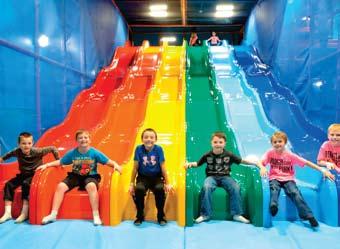



April 2024 | Rockland/Bergen Parent 3
PALISADES CENTER YOUR DESTINATION FOR FAMILY FUN
Center
more!
offers over 225 stores, 16 sit-down restaurants, an ice rink, the world’s largest indoor ropes course and
Visit PalisadesCenter.com or call 845-348-1000
Make family memories here!

F eatu R es
8 | i n the n ews
What IVF in New York looks like
12 | m om Stories
Connecting with other moms
14 | tech
Social media & kids safety: an appby-app breakdown
16 | education
The value of a bilingual education
30 | cover
Assemblymember Rodneyse Bichotte Hermelyn

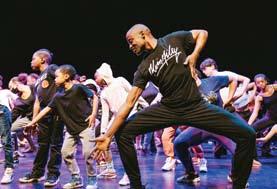

stoRies & columns
6 | editor’s letter
10 | Ask the e xpert
Coping mechanisms for new moms and knowing when therapy may be the next step
18 | travel
Family visit to Universal Studios Hollywood
34 | Family Fun
Where to see cherry blossoms
FamilY F un
32 | c alendar
All the fun activities for April
the special c hilD
22 | Special child
ADHD signs, symptoms and causes
24 | Special child
Dyslexia: Tips from an expert
28 | Special child
if you think your child is on the autism spectrum
Di R ecto R ies
29 | Special n eeds listings
on the cover
Photo: Yumi Matsuo | yumimatsuostudio.com
Hair & Makeup: Buffy Saint Marie Hernandez | buffysaintmarie.com
Cover Story: Mia Salas & Donna Duarte- Ladd
Produced by: Donna Duarte- Ladd
Shot on location at: The Soft Space by Mama Glow
Florals: Pic and Petal
4 RocklandParent.com | April 2024
2024 RocklandParent.com
April
contents
pg. 30
pg. 14
pg. 22
pg. 32
pg. 34


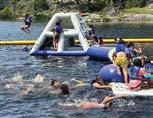
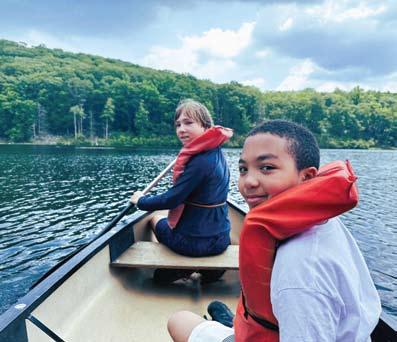





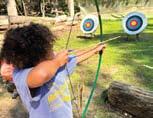


April 2024 | Rockland/Bergen Parent 5 Mosholu Day Camp/MMCC Located at Lake Cohasset in Harriman State Park 261 Arden Valley Road, Southfields, NY 10975 CALL 845.243.0751 VISIT mosholudaycamp.com EMAIL mosholudaycamp@gmail.com MAKE MEMORIES! SUMMER 2024 JULY 1-AUG 22 8 WEEKS OF FUN! WEEKLY OPTIONS AVAILABLE! An Amazing Camp Experience! Swimming, boating, sports, music, arts, and everything else you’d come to expect from an awesome summer day camp! What will be YOUR summer adventure? Information at coupedance.com Call us at 845.623.2808 • Rehearsals and performance experience •Professionally trained teachers •Knowledgeable staff •Technique classes •Nurturing environment •Guest teachers and more •The best dance training your child has ever experienced! Expand your dance horizons—experience a whole world of dance at Coupé! Enrolling students from tots to pre-professional for our summer session, July 1st–August 2nd

Cue Spring
April is the month of renewal!
This month, we have resources to assist parents and guardians in their Special Needs journey. Check out our helpful Tips on Dyslexia (page 24), the next steps if you think your Child is Autistic (page 28), and Attention-Deficit/Hyperactivity Disorder (ADHD) in children (page 22), as well as our Special Needs Resource list (page 29).
Speaking of journeys, we are in the digital generation, and it is vital to understand what kids are doing on their phones and tablets. Our Social Media & Kids App-by-App Breakdown (page 14) is a guide that breaks down kids’ popular apps and how parents/ guardians can prompt safety features to navigate these platforms.
p ubli S her: Clifford Luster
e ditoriAl d irector: Donna Duarte-Ladd
A SSociAte p ubli S her: Erin Brof
Adverti S ing d irector: Stacie Goldberg
deputy editor: Jeannine Cintron
digitAl editor: Kaitlyn Riggio
e vent S mAnAger: Shara Levine
e ditoriAl A SS i S tAnt: Shara Levine
pArtner S hip mAnAger S : Lauren Alperin, Lauren Anchin, Joan Bergman, Mary Cassidy, Suzanne Cirigliano, Chris Cunnington, Lori Falco, Shelli Goldberg-Peck, LynnMarie Hanley, Lisa Herlihy, Nicole Miller, Janine Mulé, Nina Spiegelman, Gwen Tomaselli
mA rketing & Str Ategy d irector: Rosalia Bobé
mA rketing & e vent S A SS i S tAnt: Ashley Rivera
SAle S & mA rketing ASS i S tAnt: Elana Cantor
mArketing A SS i S tAnt: Tilejah Gilead
m ediA SAle S A SS i S tAnt: Anastasia Aktipis
Art d irector: Leah Mitch
Web d eveloper: Sylvan Migdal
g r Aphic d e S igner S : Arthur Arutyunov, Connie Sulsenti
e ditor S At l Arge:
Serena Norr, Cris Pearlstein
e ditoriAl contributor S : Jana Beauchamp, Mia Salas
e ditoriA l intern: Avital Kessner
contact inFoRmation
Adverti S ing : (718) 260-4554
Lastly, there are instances when many of us, tired of the cold weather, the multiple coat layers -when spring (finally!) hits us, and we go, oh -hey, and all that stomping around in the frosty weather is forgotten. For some, that oh-hey moment is when exquisite, delicate buds from Cherry Blossoms bloom throughout the city. Check out where to see these beauties (page 34)!
Black Maternal Health Week is honored from April 11 –17 this month. It is also National Minority Health Month. Assemblymember Rodneyse Bichotte Hermelyn (page 30), is a strong advocate for maternal health for Black mothers who, through loss, got the “Jonah Bichotte Cowan Law” passed. Rodneyse shares about her path to politics, raising her toddler, and being thankful for her strong support system.
Donna
Advertising@NewYorkFamily.com
circul Ation: (718) 260-8336
Tina@NewYorkFamily.com
Addre SS :
New York Family Media/Schneps Media
1 MetroTech Center North, Third Floor Brooklyn, NY 11201
p re S ident: Victoria Schneps-Yunis
ceo : Joshua Schneps
coo : Clifford Luster
New York Family has been awarded the PMA Gold Award for for Overall Design and Bronze for Website General Excellence.
get in tou C h
Share your feedback and ideas about family life in New York!
Email us at editorial@newyorkfamily.com and tag us at #newyorkfamily
6 RocklandParent.com | April 2024 editor’s note
York Family is published monthly by Queens Family Media, LLC. Reproduction of New York Family Media in whole or part without written permission from the publisher is prohibited. All rights reserved. ©2024 Queens Family Media, LLC n ina g allo photography 2023
New



















April 2024 | Rockland/Bergen Parent 7 Miriam Aronoff, D.D.S. and Associates 845.712.5133 (cornerofPearl&Rt.306N.justpastWesleyKosher) WESLEY HILLS 2 Pearl Drive MONSEY 1 Fletcher Road, Suite C (between Robert Pitt Dr. & Monsey Blvd.) mydentistrocklandcounty.com General,Family, &Children’sDentistry • Sunday Hours Available • Most Insurances Accepted • No Insurance? Please ask about Dr. Arnoff's Reduced Fee Plan Register for FREE at www.newyorkfamily.com/ParentEdTalks FREE Parenting Webinars Sign up now! PRESENTING SPONSOR Stronger Together: A New Model for Modern Marriage Nate and Kaley Klemp Tuesday, April 16, 2024, 4 p.m. Nurturing the Nurturer: Self-Compassion Tools for Moms ������������������������������������� Wednesday, May 1, 2024, 4 p.m.
The Future of IVF in New York
By BarBara russo
As many now know – in yet another shock to families and women’s rights since the reversal of Roe v. Wade in 2022, last month Alabama’s Supreme Court ruled that embryos are considered children, a move that put many IVF (in vitro fertilization) services on hold throughout the state. While state bills protecting IVF treatments were rushed into proposal following the ruling, what could this entire legal process mean for the future of fertility treatment, especially in New York? Here’s what New York women and families need to know.
What is IVF, what is the Alabama ruling and how did it come to be?
IVF is a type of reproductive treatment that many couples use when they are having trouble conceiving.
The Alabama ruling making headlines recently stems from a court case involving couples who had children via IVF at a fertility clinic within the state. Johns Hopkins Bloomberg School of Public Health gives a summary of the case.
In short, the couples’ additional embryos were being cryo-preserved but were destroyed
during an incident at the clinic. The couples initiated lawsuits, with one claim brought under the state’s Wrongful Death of a Minor Act. Ultimately, the state’s Supreme Court said the embryos were, in fact, people.
The push to protect IVF in New York and across the country
IVF is currently protected in New York State. It is even covered by health insurance in many cases.
Joanne Rosen, JD, MA, an expert at reproductive law and co-director, Center for Law and the Public’s Health at Johns Hopkins Bloomberg School of Public Health, said that it is unlikely that New York would halt IVF.
In fact, following the reversal of Roe v. Wade, New York has taken several steps to protect and expand abortion access. For example, the state has enacted “shield laws” to protect healthcare providers here who perform abortions from criminal prosecutions by states that ban abortion.
“New York has also placed a constitutional amendment on the 2024 election ballot that would guarantee equal treatment with respect to reproductive healthcare and autonomy,” Rosen said. “In
light of these strong protections for abortion access and reproductive autonomy, I think it is highly unlikely that New York state, either through court decision or legislation, would treat in vitro embryos as ‘persons’ for the purposes of wrongful death or criminal homicide laws.”
But even in a protected state like New York, lawmakers are concerned about the future IVF.
U.S. Senator Kirsten Gillibrand, New York’s junior senator, is taking precautionary action, calling for the passage of the Access to Family Building Act, legislation that would protect access to IVF and other fertility treatments.
Gillibrand called the Alabama court’s ruling “dangerous” with the potential to limit IVF across the country.
“This ruling could have extreme implications nationwide, including in New York,” the senator said. “It will make it harder for women to access infertility treatments, put doctors at risk of legal action and establish a dangerous precedent that may be used by conservative courts to issue similar rulings in other states.”
If put into law, the Access to Family Building Act would establish access to IVF
8 RocklandParent.com | April 2024
in the news
and other fertility treatments as a federally protected right.
“Women deserve to start or grow their families without government interference, and I’m committed to making sure they can,” Gillibrand said.
Elected officials from other states agree. Democratic senators from across the country, including states such as Connecticut, Massachusetts and Florida, support the Access to Family Building Act.
Many Republicans are in agreement with Democrats on the issue, too. The Alabama bills protecting IVF clinics from prosecution and civil lawsuits advanced with bipartisan support, according to the Associated Press.
U.S. Senator Markwayne Mullin, a Republican from Oklahoma, discussed his and his wife’s fertility issues on CNN last weekend, saying about the Alabama ruling, “This is not the position of the Republican party.”
He added that he’s hopeful the state legislature in Alabama “will resolve this issue” but will also support federal action if needed.
“This ruling ... will make it harder for women to access infertility treatments, put doctors at risk of legal action and establish a dangerous precedent that may be used by conservative courts to issue similar rulings in other states.”
What are New York women saying?
Upper East Side residents, Ashley Gildin Spitzer and her husband Jon, used IVF to conceive their ‘twiblings.’ After a daunting, multi-year process, Ashley finally became pregnant with her daughter while a surrogate gave birth four months later to her son. The couple’s daughter will be 3 in July, and their son will be 3 in November.
Spitzer said she was saddened when she heard about the Alabama ruling last month, describing it as “another thing to worry about” when it comes to women’s rights.
“This is science, and it’s helping so many families,” Spitzer said. “Fertility patients go through so much to get to IVF that they shouldn’t have to fear making decisions and the repercussions to start or grow their families.”
Kathy Shamoun, a New York-based acupuncturist, sees many patients at her practice who want to reduce their stress levels, including women who are undergoing IVF. She said she was “chilled” when she heard about the Alabama ruling.
“It’s chilling news for me because I am so staunchly an advocate of reproductive rights, and so staunchly an advocate for abortion as healthcare,” she said. “Removing abortion is endangering women’s lives.”
Shamoun also offered her thoughts on the economic side of limiting IVF in states such as Alabama.
“You better believe that IVF clinics in protected states where there are no restrictive abortion laws are welcoming with open arms the influx of money that people in Alabama can pay,” she said.
















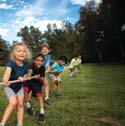



April 2024 | Rockland/Bergen Parent 9
OFFERED AT TWO LOCATIONS • Nyack Facility • Krucker’s Picnic Grove, Pomona QUESTIONS? • Contact Danielle Ball at Dball@rocklandymca.org 845-643-3071 Open House at Both Camp Locations | Date: April 27th 12PM-2PM To Register Visit www.rocklandymca.org CAMP ACTIVITIES Organized Sports Cooperative Games Recreational Swim Outdoor Play Swim Lessons Theme Weeks Weekly Trips/ Guests Early Bird Registration $455 per week until May 31st ( $480 starting June 1st ) Offering Weekly Sessions •Membership Required for All Camps •Financial Assistance Available ROCKLAND YMCA SUMMER CAMP JULY 1 – AUG 23 8AM–6PM
The Baby Blues, Stress or More?
Coping mechanisms for new moms, and knowing when therapy may be the next step
By Donna Duarte-LaDD
When my youngest was a little over a year old, I went for my annual medical and shared with my doctor that I was losing my hair and felt deep bouts of sadness and stress. I explained that my son was adopted, so I could not be going through postpartum.
My doctor let out a bit of a gasp. “You don’t have to give actual birth to feel these stresses,” she shared. I found out later that what I was feeling was called Adoption Depression, essentially the postpartum term for when you adopt. Time has passed since that doctor visit, and I have learned whether you call it the baby blues or postpartum depression when we are in the throes of it, many of us tend to dismiss it as part of the norm of being a new parent or having a newborn. Sure, a learning curve is involved when having a new human to care for while carrying your family, working, and balancing life. But when is it more? When do you need to talk to someone, get out with friends, or seek professional help such as therapy?
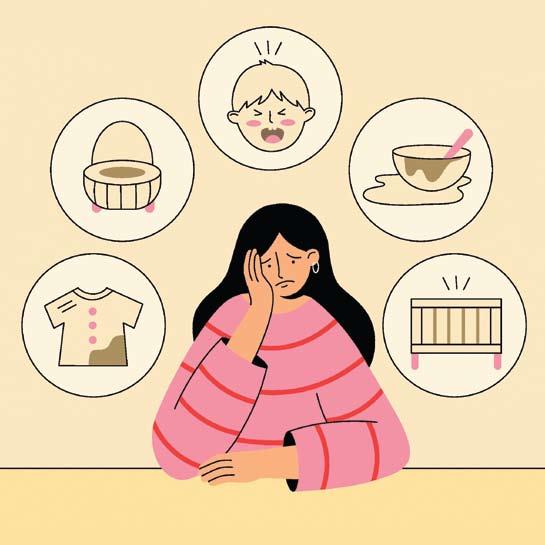
We connected with Jessica Alonso, a Licensed Clinical Social Worker and therapist at Two Chairs who helps clients deal with their challenging feelings safely and practically. She thinks it’s crucial for all of us, especially new moms, to lean on our community during rough times and significant life changes.
What are some signs that the anxiety and depression a mom is feeling is more than typical stress or “baby blues”?
While it is definitely expected that one
of stress associated with becoming a parent, particularly a mother, there are particular indicators that signal that a mom is struggling with more than the adjustment of becoming a parent to a newborn. Some of the signs and symptoms that may indicate a need for additional evaluation and assistance are a mother who is experiencing intrusive and repetitive thoughts about harm coming to her baby, while also engaging in avoidance behaviors to minimize the perceived threat to their child and in order to minimize being triggered. Many women will also display a great deal of guilt and shame surrounding these intrusive thoughts and may become so preoccupied within their own fear and apprehension, that they may report finding it difficult to bond with their child. Women may exhibit a number of signs of postpartum mental health decline, such as becoming very labile, an increased sense of hyper-vigilance, poor selfcare, social isolation, not allowing others to engage with the child, and an overall decline in their baseline functioning.
How can a parent who is feeling anxiety and overwhelming stress ask family members,
ner, for understanding and support?
The fact is that being a new parent brings an indescribable amount of joy, along with a daunting amount of responsibility and exhaustion. It can be extremely difficult to think clearly when running on little to no sleep. That said, it can be beneficial for a new mom to keep a notepad around in order to jot down some bullet points of things that she may need assistance with (i.e. meal prep, house cleaning, extra support for sleep, assistance paying bills, etc…). Additionally, engaging in more frequent conversations with a partner, family, and friends can help “demystify” a new mother’s heightened levels of stress, while anchoring and normalizing her experiences, especially if she has other moms in her circle that can serve as a sounding board or point of reference.
What key signs indicate a mom’s next step is therapy?
If a new mom finds that she is experiencing difficulty with repetitive, intrusive, distressing and debilitating thoughts re: her child’s safety and often finds herself engaged in avoidance behaviors for her child’s perceived safety and/or to avoid
10 RocklandParent.com | April 2024
ask the e xpert
being “triggered” herself, this may be a good indicator that additional support in the form of therapy may be needed or indicated. In addition, if a new mom is exhibiting a continued and progressive decline in her ability to perform her self-care, she may inadvertently be asking for additional help that may come in the form of therapy.
What role does a supportive network play when dealing with anxiety?
A supportive network plays a critical role for all individuals and especially for new parents. Having a supportive network in place serves as a safety net and allows for a new mom to feel more comfortable asking for help, voicing any worries or concerns that she may be encountering, assists in preventing feelings of isolation, and provides ideas and perspective to new parents.
What are some expert advice on coping strategies or techniques for dealing with anxiety and depression when in the throes of motherhood?
As a recent first time mom myself, I think
“The fact is that being a new parent brings an indescribable amount of joy, along with a daunting amount of responsibility and exhaustion.”
it is so important to remember that there is no such thing as a “perfect” parent nor is there a handbook provided “upon discharge” from the hospital or birthing center. It is important to remind yourself that you’re doing the best that you can and to practice self-love and grounding techniques as often as possible (this includes remembering to breathe deeply and to go outdoors for some fresh air and sunlight, as often as possible). Making time not only for yourself, but to reconnect with your spouse and/ or partner is critical too. This allows for open dialogue, emotional reconnection, and an awareness surrounding each other’s feelings, concerns, and needs. And lastly, remembering that support is available to you, should you need it and that you are most definitely not alone is a must! There are quite literally organizations world-wide dedicated to providing support to parents in the postpartum period (free of charge & 24/7), such as PSI – Postpartum Support
International. It takes a village to raise a child, so reach out to your “village members” if/when you feel the need.
About our expert:

Jessica Alonso is a Licensed Clinical Social Worker and therapist at Two Chairs in Miami. She enjoys working with clients to identify their personal strengths as well as assisting them in finding relief from their distressing symptoms in a safe and solution-focused manner. Jessica’s motivation for helping clients is rooted in her strong belief that we all need help from our community during stressful periods and transitions throughout our life. She has her Perinatal Mental Health certification and practices many modalities of therapy including systems theory therapy, cognitive behavioral therapy, and mindfulness therapy.

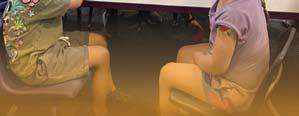

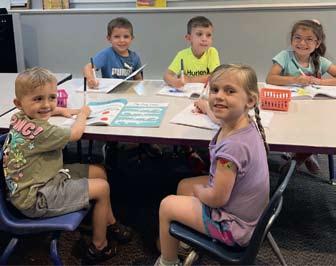

July 1st - August 16th
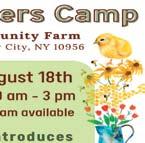






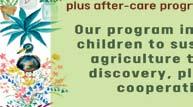





April 2024 | Rockland/Bergen Parent 11
2024.









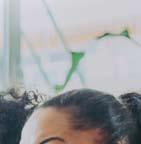






How to Connect with Other Moms
BY DREW ISSERLIS�KRAMER
“Parenting is lonely,” they said. By they, I mean everyone I encountered when pregnant with my first son in 2018. Among the many nuggets of unsolicited new-parent advice I received from well-meaning friends, family, and strangers, this one I took to heart. I worried about feeling happy after I did the big scary act of giving birth. I’d read the statistics about postpartum isolation and maternal depression. In a 2018 study, the British Red Cross found that 83% of mothers surveyed had feelings of loneliness, while 43% said they felt lonely all the time. Another survey found that 90% of new mothers felt lonely since giving birth, with over half feeling they had no friends at all.
My Journey to Mom Friends I should know. In the early weeks of parenthood- determined to beat the odds, I willed myself to leave the house with my three-week-old and our cockapoo dog in tow. After marking the occasion with an Instagram photo of the milestone, an old
college friend slipped into my DMs. She could tell from the background of my photos that I lived around the corner from her in Brooklyn. Also, postpartum, she nudged me to attend a coffee with a few new moms from the area who were also figuring it out. She was the brave and experienced second-time mom in our neurotic first-time mom circle, boldly showing us how to strap our car seats into taxis so we could easily make it to happy hour. So began our maternity leave bender. Each day at 4 PM, 10 infants napped in a row of strollers while their moms traded newborn stories. Although only acquainted for three months, processing birth trauma, lactation, and sleep deprivation bred immediate intimacy and made the everyday slog of raising young children fun and funny. In spite of that shared profound experience, COVID-19 scattered everyone in different directions almost two years later. While the love and respect for each other remained, the group chat text messages eventually slowed to silence. It seemed mom friendship required close geographic proximity to sustain, especially in a global pandemic that reduced one’s village to one’s house.
Alone, but never alone, in my new Westchester suburb, I faced the daily challenge of caring for my child without nearby family or my network of drinking biddies. As I did in Brooklyn, I looked to my neighborhood streets to find a maternal connection. During the March 2020 lockdown, my once eerily desolate neighborhood of empty nesters began to come alive with frazzled young mothers escaping from the city with baby carriages. From six feet away, we made connections and then alliances. Our wandering became routine. Twice a day, we circled a nearby pond, feeling naughty for walking the line of social distance but desperate for real-world connection. Eventually, we let our kids play outside–and then inside. It felt wrong but also necessary. Sharing the manual labor of feeding, supervising, entertaining, and transporting young children made the burden lighter and more joyful. Humans are social creatures. We are not meant to do this alone.
While my network of local moms grew during this time of record loneliness, this tale of love and friends is not true for
12 RocklandParent.com | April 2024
MOM STORIES
all. Rather, as a 2020 Cigna Health study revealed, loneliness has steadily risen since the 1990s and shows no sign of marked improvement. Whether you blame it on the pandemic, our collective dependence on screens for interaction, the decline of religion to foster community, or the rise of individualism versus the collective – humans are increasingly going it solo as a species. With great solitude comes great anxiety and the physical and mental health decline that comes with it. Add maternal hormones and the stress of working while caring for young children to the equation; mothers without the necessary support are heading for collapse.
Tips when seeking mom connection I offer my story to inspire faith in the power of parent connection. However, Rome was not built in a day. If you find yourself struggling to create social connections in your hometown, here are a few learned tips.
Seek support : The depression and anxiety that can come with motherhood is real. A mental health professional can help you to cope if you open yourself up to
Sharing the manual labor of feeding, supervising, entertaining, and transporting young children made the burden lighter and more joyful.
support. As Lauren Tetenbaum, Westchesterbased mother of two and social worker specializing in maternal mental health, puts it, “Motherhood can be extremely challenging, but you do not have to face it alone.” Medication, meditation, and therapy are available to help regulate your body and mind so you can meet the challenge of social connection.
Get out there : Standing on the sidelines, waiting at the pediatrician, or stuffing pizza in her face at a birthday party, your children’s friends’ moms are already a part of your daily interaction. Lean into the opportunities that
 Marita Smith, DDS
Marita Smith, DDS
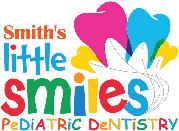
raising children together creates organically. Even if you feel uncomfortable striking up a conversation at a local pharmacy, Tetenbaum encourages, “people do want to connect and make friends, just like you.”
Prioritize passion : When you pursue the things that interest you, you will likely discover your people. Tetenbaum prescribes finding opportunities within your community to reconnect with the activities that brought you joy before having children. In addition to locating like-minded peers, it will boost your confidence and create a stronger sense of identity, which attracts more people to you.
Whether you are struggling through the early days of motherhood or the social isolation from moving to a new town, take a leap of faith and leave the house. Moving from the couch to the crosswalk put me on the path of meeting local women who make the darkest days of parenting feel brighter. Together on the road from tummy time and tantrums to coxsackie and carpools to exams and empty nesting, we begin as moms and become just friends.



April 2024 | Rockland/Bergen Parent 13
PROVIDING KID APPROVED DENTAL CARE!
Specializing in Dental Care for Children of All Ages State of the Art Dental Care & Facility 24 Hour Emergency Service Available Most Dental Insurances Accepted Nitrous Oxide available for children when necessary Se Habla Espanol 5C Medical Park Drive, Pomona, NY 10970 (845) 414-9626
Social Media & Kids Safety
An app-by-app breakdown
BY MIA SALAS & DONNA DUARTE�LADD
Social media is constantly in the news, as well as the safety of kids and how they use it. Here in New York City, Mayor Adams is currently one of the leading voice on the effects of social media on young people’s mental health.
Last year, United States Surgeon General Dr. Vivek Murthy issued an advisory stating that “More research is needed to fully understand the impact of social media; however, the current body of evidence indicates that while social media may have benefits for some children and adolescents, there are ample indicators that social media can also have a profound risk of harm to the mental health and well-being of children and adolescents.”
Yet, our kids, for the most part, will have social media in their lives even if they do not own a phone or are on an app. For us parents who allow our kids to be on certain apps know that social media opens up their children to new ideas and experiences, but it can also be scary. As parents, we want to ensure our kids are staying safe. Yet this can be tricky when we don’t know what content they’re seeing on their phones or tablets.
That’s why we put together an easy guide on kids’ safety on this age group’s favorite social media platforms. We’ll cover what controls the platforms offer to ensure content is right for a young audience.
While some platforms offer a “kids” version of the app, others have a strict 13+ age restriction. So it’s super important that you see which apps your kids download and make sure they’re entering their birthday right.
Read on to learn more about privacy, messaging, and parental controls for kids on social media.
Instagram safety measures
Privacy: In our opinion, Instagram is one of the leaders in safety initiatives in social apps. If you’re under 16, your account is set to private by default. This means anyone who wants to follow your kids will have to send them a request. Strangers won’t be able to see or comment on


their posts unless they accept the request.
Messaging : Instagram restricts people over 19 from sending private messages to teens who don’t follow them. If an adult tries to message your child (and they don’t already follow that adult), the adult will get a notification that DM’ing them isn’t allowed.
Other protections : There are several other safety measures in place for teens on Instagram. For example, the content they post won’t be shown to suspicious adults in Explore, Reels of “Accounts Suggested for You.” Adults flagged as suspicious also won’t be able to see teen accounts in follower and following lists, see who likes posts, or see comments from teens on other posts.
Tools for parents : Instagram’s Family Center is helpful for it guides parents and guardians on managing their teens’ activity on the platform. It includes tools such as setting time limits, managing who can message their teen, viewing their activity, and controlling who can see their teen’s posts. This aims to provide parents with greater supervision and management over their teen’s Instagram experience, promoting safer and more responsible usage. Several controls are available to parents to help monitor your child’s activity on Instagram. Parental Supervision lets you set time limits, schedule breaks, see their time spent on Instagram, see their followers and who they follow, shared connections, who they’ve blocked or reported, and see their privacy setting selections.
Something worth knowing : Instagram will also allow you to request your child’s photo removed from an account.

YouTube and YouTube Kids safety measures
In total transparency, we have teenagers, and there is no way that our tweens and teens want anything but YouTube, not YouTube kids. YouTube kids are for the younger set still in the sweet phase and will not go the sneaky path and search for content they know 100 percent would not be okay for the devoted adult who cares about their mental and social growth.
For instance, at home, this editor uses trust in what our teenagers search for, and so far, it is going well. However, every tween/teen experience is different. If you wish to have some management over your child’s YouTube experience, you can set up a supervised YouTube Account. You can place some firewalls; however, they are not impenetrable, and inappropriate content can find its way in.
YouTube Kids : YouTube has an entirely secure experience for kids with YouTube Kids. It’s a family-friendly version of YouTube that uses automated filters to ensure the content shown is appropriate for kids.
Tool for Parents : Parents have full access to YouTube Kids, making it easy to know what your kids are watching. You can create individual profiles for each of your kids, decide what content to make available for your kids, set a timer to limit screen time, see recent videos your kids have been watching, and more.
Something worth knowing : If content that isn’t family-friendly shows up on YouTube Kids, you always flag it for removal from the app or block the account entirely.
There’s also a built-in timer to help limit
14 RocklandParent.com | April 2024
TECH
your kid’s screen time. It can stop the app when their time is up so you don’t have to do it yourself!
TikTok safety measures
This is the tough one, as kids are obsessed with this app. While guiding younger kids on watching TikTok is more manageable, the older kids can be a different story. Many reports have deemed this particular app as dangerous.
Privacy : TikTok offers “Family Pairing,” which pairs your account with your kid’s account. This gives you access to more privacy, content, and well-being settings and helps you see what your kids are watching. You can even turn searching on and off within the app if you don’t want your kids to search for things independently.
Other protections : TikTok offers granular controls to manage what your child can do and see on the app. These include filtering comments, blocking accounts, setting screen time limits, and disabling video downloads.
You can also set a daily screen time limit so your kids don’t spend too much time scrolling.
Our kids will have social media in their lives even if they do not own a phone or are on an app.
Something
Worth Knowing : Beyond Family Pairing, you can also turn on Restricted Mode. This hides content that might not be appropriate for kids and teens.
Snapchat safety measures
Privacy : Snapchat has several controls in place to give you peace of mind that your kids are using the app appropriately. First, contact settings for teens are set to friends and contacts only by default. This means adult strangers can reach out to them. They can also only share their location with friends on Snap Map. Teens often get reminders to review and update their privacy settings and security, ensuring they don’t get hacked.
Messaging : Only friends can communicate one-on-one on Snapchat for teens. So unless they are friends on the app or they have
their contact already in their phone, the adult wouldn’t be able to contact your child. Teens also don’t show up in search results, which is intentional so their accounts are less discoverable to adults. If at any point your kids feel uncomfortable talking to someone, they can block the account so they’re not able to reach out again.
Other protections : Snapchat actively reviews and recognizes severe harms, and they’ll disable those accounts causing them. They make it difficult for bad actors to rejoin Snapchat, therefore keeping the app a safe place. Their Global Trust & Safety Team works 24/7 so they can act quickly on inappropriate behavior.
Tools for parents : Parents can set stricter content limits beyond the ones already in place. Snapchat’s Family Center allows parents to monitor who teens are talking to on Snapchat and set Content Controls.
Something Worth Knowing : Snapchat also does its best to show age-appropriate content to teens via Stories and Spotlight. They’ve developed accurate detection tools to find and prevent harmful public accounts from showing their content to teens.

April 2024 | Rockland/Bergen Parent 15
GREAT BARRINGTON, MASSACHUSETTS Make a Change Today. Apply now for Fall 2024 to begin college early after 10th or 11th grade. simons-rock.edu

The Value of Bilingual Education
By Mia Sala S
As New York parents, we’re all too familiar with the many options for school. We know how overwhelming (and time-consuming) it can be to research the different options and find out what would work best for your child. That’s why, we’re coming in clutch with your guide to all things bilingual education!
If you’re considering sending your children to a school that has a bilingual program, then stop the oh-so-exhausting research process now and check out our brief (but informative, as always) summary about what to expect. Bilingual education has become increasingly popular in New York and beyond, so we’ve got the scoop on why that is and how some of these programs are structured. Read on to find out if bilingual education is for your family.
History of Bilingual Education in NYC Bilingual education has been around for quite some time now. Private schools each have their own founding stories, many dating back
to the early 20th century. But as for bilingual programs in New York public schools, bilingual and ESL education appeared in 1974 following a lawsuit against the NYC’s Board of Education for failing to educate Puerto Rican students with limited English skills. Since the implementation of the Aspira Consent Decree, New York ESL and Bilingual programs have expanded to serve students speaking over 145 languages. While bilingual education began primarily as a way for kids who speak their native language at home to learn English, it has since become attractable to parents of kids who already speak English natively. Why? Keep reading to find out!
Why Bilingual Education?
You may be wondering what all the hype is about bilingual education anyway. First and foremost, bilingual learning not only connects students with another language, but with that language’s culture as well. We all want to see our little scholars grow into wellrounded adults with a strong education, but we also want them to accept difference, celebrate diversity, promote inclusion, and craft an open
mind. Bilingual education shows kids from an early age that their own language and culture is not the only one, and it broadens their perspective from New York to the greater world in which we are all a part of.
Not only do kids develop more inclusive views early on, but bilingual education instills empathy. Think about this: your child is learning to speak both English and Italian. All of their friends at school are too, but some of their friends in their neighborhood at home don’t go to a bilingual school. So your child has to think about this, and then decide to use English when communicating with these friends: in other words, they have to think about others before thinking about themself. While this quick decision-making process may seem trivial, it actually kick starts empathy, collaboration, and social emotional skills from a young age.
And finally, studies have shown that bilingual education actually accelerates and improves many academic skills (that extend well beyond the classroom), such as reading levels, problem-solving, math competency, creative thinking, and more. Part of this
16 RocklandParent.com | April 2024
education
is because learning two languages at once sharpens their memory, but it’s also because learning two languages shows kids that there is more than one way to approach something. Much like their decision to speak either language based on their situational context, they’ll likely look at challenges in the same way, whether that means coming up with multiple ways to build something STEM related or thinking about solving a math problem on a test in multiple ways.
Types of Bilingual Education
Now that we’ve covered our bases on why bilingual education is so popular, let’s go over the types of bilingual education, because yes, there’s even subcategories within the categories when it comes to New York education.
Public vs. Private : The first decision you have to make is whether you want to send your kids to a public or private bilingual school. Well, before that you should consider what foreign language you want your kids to learn. This is because public schools offer many English-Spanish programs, but if

Bilingual education shows kids from an early age that their own language and culture is not the only one, and it broadens their perspective.
you’re looking for Italian, German, or French bilingual education, you’ll likely have more options with private schools. This isn’t to say that you can’t find programs with these languages in public schools: many public schools offer Chinese, Russian, Arabic, Italian, Bengali, French, and more. But the catch is that if you don’t live in that district, you’ll have to apply to attend that school. As for private schools, your kids will likely have more focused attention on them and their language learning because of the smaller number of students. Many bilingual private schools have two teachers in every classroom
— one who natively speaks English, and the other who natively speaks the other language that the school teaches. Both public and private schools have their pros, but if you are hesitant to browse private schools because of financial circumstances, be sure to check out their admissions pages first. Many New York private bilingual schools offer generous financial aid and scholarships, so don’t let this deter you!
English as a Second Language vs. Dual Language : Does your child speak another language at home and you want them to learn English through school? If yes, then English as a Second Language (ESL) is the bilingual education format that you’re looking for. If your goal is for your child to learn two languages simultaneously (half instruction in one language and half in another language), then Dual Language is the right fit.
Hopefully this guide summed up bilingual education for you. If you’re considering sending your little one to a bilingual school, check out our round up of the Best Bilingual Schools in New York!

















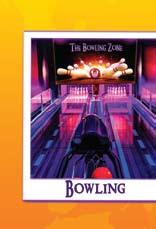




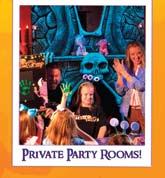
April 2024 | Rockland/Bergen Parent 17
Family Visit to Universal Studios Hollywood
By Shara Levine
My family and I needed a break from the New York winter, and with a lengthy school break on the horizon, I booked a trip to sunny California. That was the easy part. Now, what to do? That was an even easier decision, with a visit to Universal Studios Hollywood at the top of our list.
As a parent of four children spanning the ages of 7-16, I knew that Universal Studios Hollywood would make everyone happy with so many of the rides and attractions based on their favorite films and television shows. But Universal Studios Hollywood isn’t just an amusement park, it’s an immersive experience that makes you feel like you’ve entered the worlds of Harry Potter, The Simpsons, Jurassic Park, and more.
Before beginning our adventure, we made sure to download the parks mobile app. The mobile app was essential for our day out; we documented where we parked our car, saw which rides were available along with wait time and height requirements, used the interactive map to navigate the park, explored dining options, checked characters meet and greet times, reviewed the schedule for the incredible live performances, and found where to shop for souvenirs and apparel.
With our tickets in hand and the mobile app downloaded, we were ready for a day of fun! As we approached the park we immediately noticed the iconic rotating Universal Studios Globe made famous by its appearance at the beginning of all Universal Pictures films. Just beyond that we had our very own red carpet moment, just like the movie stars do, where we had our picture snapped on our way to the entrance. When we entered it was as if we were transported to old Hollywood and I immediately started taking pictures as I walked through the streets and storefronts inspired by the era.
Top Rides and Experiences to Visit at Universal Studios Hollywood
Our game plan relied heavily on our Universal Studios Hollywood mobile app because we chose the rides based on the estimated wait times provided. But we didn’t just hop from ride to ride- we explored the areas surround-
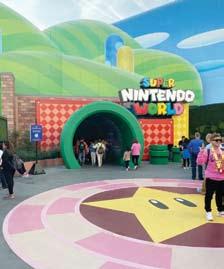
ing them as well. Our first stop was Springfield: Home of the Simpsons where we felt like we stepped into the world of Bart, Homer, Marge, Lisa, and Maggie.
There we were able to explore the landmarks made famous from the hit television show including the Kwik-E-Mart, Krusty Burger (where you can have an actual Krusty Burger!) Moe’s Tavern and the Krustyland. Like any good theme park, Krustyland has a variety of carnival games where players can try to win The Simpsons themed stuffed prizes. Carnival games range from challenging to easy and are not included in your Universal Studios Hollywood admission. My younger ones wanted to play, so I chose a game for them where everyone automacially wins a prizemeltdown averted! Besides carnival games, there is also the “The Simpsons Ride” where we rode along with The Simpsons family in a simulated roller coaster as we tried to escape the clutches of Sideshow Bob- the former sidekick to Krusty the Clown. “The Simpsons Ride” ride contains drops, sudden turns, and lots of humor and was a hit with everyone.
Next we headed to The Wizarding World of Harry Potter where despite being a family of muggles, we were granted entry. We got to soar above the Hogwarts School of Witchcraft and Wizardry on “Harry Potter and the Forbidden Journey” and learned how to approach a Hippogriff on “Flight of the Hippogriff.”
Helpful Tip : If you’re with a kid that isn’t

ready for the excitement of Harry Potter and wants to sit a ride out you can take advantage of the parks “child switch option,” where one of the adults can wait with that child while the rest of you rides. Once you are finished, you can switch places so whoever rode can stay with the child, and the adult who sat out can enjoy the ride. This option is available all over the park.
After, we made our way through Hogsmeade (usually only open to wizards, witches, and other magical beings), where were could grab a pint of Butterbeer, find the perfect wand, shop for all of our wizarding needs, and send a postcard via owl just like they do in the Harry Potter movies and books.
Minion Land was next on our list and was anything but despicable (see what I did there?). We were turned into Minions on “Despicable Me Minion Mayhem” and saw what pets do when we aren’t around on “The Secret Life of Pets: Off the Leash” rides. Next, we checked out the “Super Silly Fun Land”
18 RocklandParent.com | April 2024
travel

playzone, inspired by the carnival scene in the film Despicable Me, which has a water play area perfect for cooling off on a hot California day, a dry play area for the younger ones to climb and slide, and the “Silly Swirly” Minion themed ride offering a bird’s eye view of Minion Land. There are also carnival games, including “Super Silly Space Killer,” just like they played in the movie.
Welcome to Jurassic World. If the Jurassic Park films made your heart race, wait until you take on “Jurassic World – The Ride.” What started off as a relaxing cruise to see dinosaurs suddenly took an unexpected turn when we found out that some of them escaped, and our boat ended up taking an 84-foot plunge!
Helpful Tip : This plunge looked too scary for my 7-year-old, so he sat this one out. I sent my older kids without me and took the little guy to the DinoPlay area next door where he happily climbed, dug for fossils, explored a full-size T. rex skull, and more!
But no journey to Jurassic World is com-
plete without seeing dinosaurs up close, and you can do that at the “Raptor Encounter ” featuring everyone’s favorite Velociraptor, Blue, along with a Triceratops and a Baby Raptor led by a Jurassic Park dinosaur guide who told us all about these prehistoric creatures.
With major Nintendo fans in our family, there was no way we wouldn’t cover every inch of SUPER NINTENDO WORLD. This area of Universal Studios Hollywood opened a little over a year ago and captures the magic and fun of the Super Mario Bros. games and all of the characters they encompass. So how does one get to SUPER NINTENDO WORLD? Through a green pipe, of course! As we walked in, we were instantly transported to the Mushroom Kingdom featuring Princess Peach’s castle, oversized mushrooms, spinning gold coins, Venus Fire Traps, Bowser’s castle, and more. This immersive experience also offers interactive games, the opportunity to meet Mario, Luigi, Princess Peach and Toad, and a chance to play “Mario Kart” like never before when
we put on special goggles and took on Team Bowser in “Mario Kart: Bowser’s Challenge.” Although my family has played “Mario Kart” at home numerous times, this was a completely different experience and included new to us technology.
While having all of these mini adventures, we almost forgot that Universal Studios Hollywood is a real working movie and television studio, and to learn more about what goes on behind the scenes, we took The World-Famous Studio Tour. With Jimmy Fallon as our virtual tour guide, we spent about an hour learning about the history of Universal Pictures and touring the backlot where we recognized streets and neighborhoods from shows like “The Good Place” and the new “Quantum Leap.” But this isn’t your ordinary movie studio tour because we also a flash flood, a too close for comfort encounter with the most infamous great white shark of all, Jaws, plus experiences with King Kong and the Fast & Furious. The hour flew by and it gave us a new appreciation for what goes into the films and the television shows we watch, and like everything else in Universal Studios Hollywood- we had fun!
What You Need to Know About Visiting Universal Studios Hollywood
Universal Studios Hollywood is located at 100 Universal City Plaza in Universal City, CA.
General Parking before 5pm starts at $32 and $10 after 5pm.
Single and double strollers are available for rent or you can bring your own. A single stroller rental is $25 and a double is $35.
The mobile app is available for free on Google Play and the AppStore.
Tickets start at $109 for 1 day general admission and $159 for 2 day general admission. For an additional $20 to your park admission you can enter an hour early to experience SUPER NINTENDO WORLD.
Universal Express tickets start at $209 and includes general admission and express access to rides. (At this time “Mario Kart: Bowser’s Challenge” is excluded from Universal Express. See website for additional details).
For more information, visit Universal Studios Hollywood on their website and give them a follow on Facebook, Instagram, X, TikTok, and YouTube.
Thank you Universal Studios for the park experience , all opinions are my own and I have not been paid for this review
April 2024 | Rockland/Bergen Parent 19
Photo by Shara Levine










20 RocklandParent.com | April 2024 315 Jefferson Avenue, Westfield, NJ 6 Bedrooms | 5.1 Baths | $2,395,000 #LoveWhereYouLive Frank D. Isoldi, Broker Sales Associate Coldwell Banker Realty 209 Central Avenue, Westfield, NJ 07090 Cell 908.787.5990 Office 908.233.5555 Web theisoldicollection.com Facebook @theisoldiconnection X @HomesWestfield Instagram @frankdisoldi SCAN HERE © 2024 Coldwell Banker Residential Brokerage. All rights reserved. Coldwell Banker Residential Brokerage fully supports the principles of the Fair Housing Act and the Equal Opportunity Act. Operated by a subsidiary of NRT LLC. JUST LISTED! 805 St. Marks Avenue, Westfield, NJ 4 Bedrooms | 2.1 Baths | $829,000 925 Wyandotte Trail, Westfield, NJ 5 Bedrooms | 3.1 Baths | $1,699,900 UNDER CONTRACT 862 Summit Avenue, Westfield, NJ 3 Bedrooms | 1.1 Baths | $699,900 852 Boulevard, Westfield, NJ 4 Bedrooms | 2.2 Baths | $1,087,000 SOLD! SOLD! 523 Trinity Place 2DS, Westfield, NJ 1 Bedroom | 1 Bath | $385,000 JUST LISTED! UNDER CONTRACT

www. r ockl A nd pA rent.com s pecial n ee D s Resou R ce g ui D e Roc K lan D /Be R gen
ADHD in Children
Symptoms, causes and treatments (other than medication!)
By Jeannine Cintron
Ithink my 12-year-old daughter has ADHD, but she’s not (yet) been diagnosed. Why? Because when I finally decided to have her evaluated, after years of being on the fence about it, I was advised against “opening that can of worms" as long as none of her teachers had ever recommended it.
Can of worms? Really?
While none of her teachers ever expressly recommended an evaluation, I always heard things like “takes forever to complete classwork” and “has trouble focusing” and “gets distracted easily.”
ADHD, or Attention Deficit Hyperactivity Disorder, is described as a chronic neurological condition marked by persistent inattention, hyperactivity, and sometimes impulsivity. It is one of the most common mental conditions in children. Around 6 million children ages 3 to 17 have been diagnosed in the U.S. alone, according to the CDC.
Despite the staggering statistics, I think a lot of people - even professionals, apparently - have this stereotypical view of ADHD that it's just an excuse for lazy or bad behavior, one many parents use to medicate their children into being good without even considering whether other treatments are available. That stigma leads a lot of parents (myself included) to assume medication is the only way to treat it, and that the medication will turn their kids to zombies anyway.
But if your child is showing signs of having a developmental disability like ADHD, don't be like me and wait until they are halfway through middle school before you finally decide to take action just because a teacher never told you to. No one knows your child like you do, so if you are concerned, have them evaluated and know there are options beyond medication (and also know that medication might actualy end up being the right choice for your family).
I spoke to Dr. Rebecca Jackson, a board certified cognitive specialist, Brain Wellness Expert, and author of Back on Track: A Practical Guide to Help Kids of All Ages Thrive , which delves into developmental red flags, to learn more about ADHD, why diagnosis seem to be
on the rise and what parents can do if they are concerned.
ADHD Signs & Symptoms in Children
Hyperactivity. According to Dr. Jackson, the “H” in ADHD, as in hyperactive, tends to be more noticeable in younger children. "The older your child is, the less likely you are to note the hyperactivity,” she says. “The hyperactivity component tends to be the piece that draws attention the most. It’s disruptive in the classroom, at the dinner table, on playdates. So oftentimes, the first sign or symptom that parents see is the hyperactivity impulsivity, because of all the disruptions happening.”
Inattentiveness . “What is much more easily missed is the inattentive type of ADHD,” she continues. “And that one becomes more evident the older a child gets, because with that you don’t have the loud disruptive behaviors, but you see heightened challenges with executive functions. This is going to be the child that does the homework and forgets to turn it in. And as a parent, you’re like, ‘Are you kidding me? You already did the hard work!’ You find yourself saying, ‘why didn’t you just…’ all the time. Why didn’t you just remember to bring your lunch with you in the morning? Why didn’t you just turn in your homework?”
Limited Attention Span . We all have a natural window of attention, according to Dr. Jackson, and our attention develops with age and maturity. “A two year old is only going to do a thing for two to four minutes at a time. But by the time they get to kindergarten, a child should be able to sit in the circle and participate for a longer period of time. So as a parent, if you’re not seeing your child’s natural window of attention improving over time, and if everybody else in the class is able to attend to the task long enough to complete it, but your child’s needing redirection or needing to bring it home, that is a red flag.”
Task Switching . Executive functions are our ability to achieve a goal, like turning in homework to get good grades. Individuals with ADHD have a harder time with task switching and with executive functions. “Let’s
say I’m working on a project and my phone dings to tell me I have a text message. I’m going to shift my attention to my text message,” says Dr. Jackson. “Task switching should remind me to go back and finish the project that I started. But with ADHD, it’s harder task switching when the brain is not remembering to go back and finish what it started. Lots of started things don’t get completed.”
Emotional regulation . People with ADHD tend to have difficulty managing frustrations. We all have a point where we get frustrated and upset, or we cry when we’re really angry or we lose our temper. “With ADHD there’s an immaturity in some of those networks and pathways in the brain, and so the upsets can happen more frequently,” Dr. Jackson says. “They can last longer and they can be bigger. And so if you’ve got a daughter that’s really dramatic and always getting super upset with friends, that can be a red flag. Or a boy playing on the playground who gets super upset because people aren’t following directions, that can be a red flag. And again, we all have a threshold of when we lose our temper. But if it’s happening more consistently than peers that are appropriate in their development, that’s a concern.”
Causes of ADHD
So what causes ADHD? That’s the million dollar question, Dr. Jackson says. “There are a lot of different factors that can contribute to ADHD. Both genetics and environmental factors can play a part. If a child experiences trauma, abuse
22 RocklandParent.com | April 2024
special child
or neglect, it can interfere with development.
"But there’s also the times where I meet a parent with two kids, same household, same environment, same genetics, and one child is thriving while the other faces challenges with ADHD.”
Technology & ADHD
I asked Dr. Jackson if the overuse of technology is a factor in developing ADHD. “I’m not going to say that scrolling social media and gaming causes ADHD, but what I am going to say is that the individual with ADHD is going to be even more susceptible,” she says. “When we’re spending large chunks of time, scrolling the Internet, whether we’re watching YouTube videos or Tik Tok, videos or gaming, the type of attention we’re using is heightened attention. And when you’re in that hyper focused mode, you lose awareness of time and of what’s happening around you. It’s why when you go to bed at night and say ‘I’m just going to check my phone for a minute,’ before you know it an hour passes and you’re still scrolling.
“Hyper focus is incredibly fatiguing on the brain. It makes the brain exhausted. Let’s say you’ve got an eight year old who just spent two hours on Tik Tok or watching YouTube videos or gaming. When you ask them to stop, you’re going to get tears, pushback, negative behavior. It’s not just that they don’t want to stop. It’s that we just allowed them to completely fatigue their brain and their resources. And now we’re asking them to be able to regulate their mood and emotions.
“When you watch something that you
like, funny dog videos for example, there’s a dopamine release in the brain.that gives you a burst of energy.
“So when a parent asks why they can game for an hour but they can’t do 20 minutes of math, it’s because gaming is short bursts of attention strung together with a dopamine reward in the brain. When you’re doing math, there’s no dopamine reward in the brain. So our kids are exercising their reward-driven pathways, not sustained attention. The individual with ADHD is starting with a brain that’s already fatigued, so they’re going to fatigue even faster. And that dopamine is hitting them hard and so they’re going to gravitate towards those activities even more. As parents, we don’t want to ban things but be mindful of the balance. So say, ‘sure, you can spend 20 minutes online, but you’re going to get your homework done first. We shouldn’t have you gaming and fatiguing the brain before you do homework. And then we don’t want it in the hour before bed because it can disrupt the ability to fall asleep and the quality of sleep.”
ADHD Treatment
Speaking of quality of sleep, that’s one of the components to managing ADHD on a daily basis to support the level of function that you currently have. Dr. Jackson recommends making sure kids are getting adequate sleep and eating nutritious foods. “We know that sugar drives inflammation and so does highly processed food. Inflammation is like asking your brain to function with fog. What you eat matters,” she says
Medication
To medicate or not medicate, that is the question. There can be many side effects related to ADHD medication, and so naturally parents might be hesitant to try it on their child. Conversely, some parents might think medication is the easy cure-all their child needs to get back on track.
Anytime there’s medication, there’s a trade off, Dr. Jackson explains. “There are pros and cons, risks and benefits that it’s important for parents to understand. We talk to so many families that are getting pressure from teachers or from other adults in their life to medicate their child. But that is a decision solely between the parent and the physician, that should not be based on outside pressure from others.
“I don’t ever want a parent to feel guilty about a decision they make. But there’s this misnomer that we’re going to start medication and all of our problems are going to be solved. It’s difficult figuring out what’s the right medication
for your child, the right dosage and combination. And what works now might not work six months from now. So it’s not always the quick, easy fix that parents think it’s going to be.
“What we know from the research is that there’s an impact on growth and development. A child that has been medicated over time might not grow to their full height. We know within the first several months of taking medication, there’s not always long term change in the grades and learning outcomes. So the studies were mixed in terms of how it helps with academics and learning. A lot of kids experience decreased appetite, so we have kids that already have immaturity and brain development, and our foods that we eat fuels the growth and development of our brains. We’ve got an immature brain and a suppressed appetite, and that worries me for the future development of that brain."
Brain Balance
While medication can help, there are other treatment options that parents might not be aware of. Dr. Jackson is Chief Program Officer for a company called Brain Balance, which is a program that builds and strengthens networks and pathways in the brain through specific stimulation, exercises, and activities. “I always say we exercise the brain the way you use it in real life," she says. "At Brain Balance, we’re engaging multiple different senses while a child is doing coordinated, fast, accurate eye movements with auditory processing, visual processing, body coordination, rhythm and timing, exercising and engaging as many networks and pathways as we can simultaneously. And then we engage those pathways over and over to make them stronger, faster, more efficient.”
A child does not need an official ADHD diagnosis for this kind of non-medicated treatment, either. Nearly 10% of kids in the US right now qualify for that diagnosis, but nearly 17% of kids qualify for what is called a subthreshold diagnosis, meaning they’re falling just shy of the criteria. I think this is really important because the kids can still be struggling to keep up, to pay attention and to regulate mood and emotions. With subthreshold ADHD, there’s immaturity of the brain, but maybe not quite to the extent of full ADHD, so they don’t qualify for a label or a diagnosisand would not be prescribed medication - but that doesn’t mean that they still don’t need help and support.”
To learn more about Brain Balance, go to brainbalancecenters.com. Dr. Jackson’s book, Back on Track, is available on Amazon.
April 2024 | Rockland/Bergen Parent 23
Early Intervention for Dyslexia
Helpful tips from an expert
Statistics from the Yale Center for Dyslexia & Creativity show that dyslexia affects 20 percent of the population and accounts for 80 to 90 percent of all those with learning disabilities, making it the most common neuro-cognitive disorder.
While dyslexia is a chronic condition that’s rarely cured, early identification and intervention can help build essential skills for reading, writing and comprehension.
Early signs of dyslexia and intervention practices may vary from person to person. We sat down with Dr. Rebecca Mannis, learning specialist and founder of Ivy Prep, about signs of dyslexia that parents can look out for and what intervention may look like.
What are some early signs of dyslexia that parents can watch out for?
Toddler/preschool
• Delayed language development
• Difficulty following multistep directions
• Frustration in communicating – difficulty retrieving words or labels
• Difficulty sitting and retaining the story at circle time
• Meltdowns over communication and transitions
Preschool/primary school
• Difficulty with rhyming (ex: Dr. Seuss books) or appreciate language nuance (ex: getting the joke in Amelia Bedelia books)
• Lack of recall for reading common “sight words” they often see, such as “love” or “taxi”
• Lack of interest in reading or writing
• Contrast between strong interest in hearing stories (being read to) and interest in learning how letters fit together to make words
• Difficulty with segmenting words into sounds (c-a-t) or syllabication (clapping out the syllables in their names “Ga-bri-el”)
• Hesitation about attending school or academic performance
• Difficulty “encoding” or writing short words that can be sounded out or remembering the spelling of “Dolch List,” high
E M D A F X S O ? ? ? Y L I ?
frequency (common) words like “love” or “mother”
• Reversing letters
• Skipping words when read aloud
• Slowness at blending sounds of words or recalling what sight words “say” (lack of fluency/automaticity)
• Dysgraphia, or difficulty in the motor planning of how to hand write letters
What does early intervention for dyslexia look like?
This depends on the individual child’s learning profile and what is being done on-site (or not provided) at the school. Some
children require specialized schools for dyslexic students, where systematic, multisensory approaches are used on a daily basis and across the classes a child has each day.
Other students can thrive with customized support outside school with learning specialists who are trained to interpret test findings and develop an intervention plan that speaks to the specific child and the specific school’s curriculum.
This is where it is particularly important for parents to do their homework. Not all learning specialists have the same training or vantage point about support, and it is big business.
24 RocklandParent.com | April 2024
special child
There are different philosophies and approaches, and sometimes what is presented as “evidence based” is actually a cookie cutter approach – or the wrong pacing and sequence for your child’s particular needs.
For example, if a student needs high repetition of information or to preview information in order to keep up with the class work, then it is important for a learning specialist to design sessions that balance the specific instruction for underdeveloped skills that are not course-related (for example, how to divide long words into syllables) while also using the child’s homework spelling list or the sight words in their science chapter to manage schoolwork and get that real-time reinforcement of reading strategies that speak to the daily experience in the classroom.
Similarly, it is critical for parents to identify professionals who can balance traditional print tools, such as workbooks and games that reinforce the skills, with adaptive technology. This is where parents can feel particularly frustrated, as neuropsychologists are not educators, and educators are not neuropsychologists.
Approximately 80 percent of my clientele and I start with a consultation where I provide a chart review to demystify the test findings to help parents “connect the dots” between their observations, test findings, and working with schools or other stakeholders.
There is a huge element of “caveat emptor,” since so much of this is not licensed and these high stakes serials can overwhelm kids and parents alike.
Even when specialists have licenses, there is wide variability in skill set, how intervention sessions are constructed, and even attitudes about which support is needed.
For example, at times language specialists or occupational therapists will feel there is more work to be done in grade 4 or 5 in shoring up underdeveloped language or fine motor skills, while other specialists may feel that the priority needs to shift toward teaching students how to communicate better in writing or use adaptive tech, dong so with an eye toward ongoing challenges in processing speed, word finding or handwriting.
How can parents and schools support a child with dyslexia?
Support for dyslexic students is equal parts, art, science, and alchemy.
It’s critical for there to be a systematic approach. Sometimes that means using very similar materials in both outside support and
“There are different philosophies and approaches, and sometimes what is presented as ‘evidence based’ is actually a cookie cutter approach – or the wrong pacing and sequence for your child’s needs.”
during the academic day or in reading intervention at school.At other times, it makes more sense to “divide and conquer.”
For example, at school, a teacher may be focusing on how to write a paragraph with a topic sentence, three supporting details, and a conclusion using a “quick outline” that is very structured, streamlined, and predictable.
In remediation, it can be very helpful for the outside specialist to use the same “quick outline” that the teacher uses in history class. And it may be important to work on writing while using the History assignment if the child is fatigued or has other after-school activities that day.
However, the outside learning specialist may also be incorporating instruction in how to use a predictive word processor, or in helping the child with expanding his vocabulary, so that he doesn’t rely on a narrow lexicon of words to communicate his point in the essay.
Similarly, it may be that at school, the teacher is working on a particular spelling curriculum, where the focus is on spelling words with particular prefix patterns.
In outside support, those words can be practiced, but it’s important to use particular methods that are aligned with the child specific type of dyslexia to ensure that appropriate visual cues or phonetic (sound-letter) patterns are reinforced.
The truth is that this takes a great deal of expertise and time in order to identify ways that support can be integrated while also being realistic about what each individual can contribute to this process.
In the absence of this, it can be very time-consuming and confusing, and also frustrating, not only for the children, but for their parents.
In my practice, I am in frequent contact
with other stakeholders, and typically serve as a case manager, who integrates that information, not only to demystify the process, but also to help parents identify signposts that they can be looking for both to monitor their children’s growth, and to determine the best investment of their resources and the child’s time, if they’re not satisfied with the child’s development.
Another element of providing services to the child and family is helping parents truly understand the different philosophies and methodologies that are available to help children with disabilities.
For example, many specialists will encourage a multisensory, phonics based approach that reinforces sound patterns for children since about 60 to 80% of children with dyslexia have difficulty with phonology, or linking letters to sounds.
However, the research on these highly structured methods and their efficacy with children with more spatial difficulties, sometimes called “NVLD,” or nonverbal.
Learning disorders are mixed. In that situation, a child may need a well developed, but more eclectic approach that helps them for example, to memorize and write sight words, words like “though” or “again,” words that cannot be sounded out phonetically.
Similarly, there are some schools that believe strongly that in the lower school grades, adaptive technology should not be used with children, while other outside specialists or schools integrate technology as a literacy tool for children with developmental dyslexia from the get-go.
Because there is such a wide wide range of approaches, and often neuropsychologists don’t know the nuts and bolts of how these programs are implemented for specific curricula, it is important for parents to understand that, just like learning to read is developmental.
In the same way, learning how to line up your ducks in a row to best serve your child at a given time is an extended learning process – and process of collaboration and empowerment – for parents, as well. No one cares about a child more than a parent, so it is critical to take care of yourself so that you can manage the long haul, along with your spouse and child.
What do accommodations typically look like for dyslexia, at home and in the classroom? What would workarounds look like in everyday life?
Accommodations can look different for children, depending on their learning profile, their school, their grade level, and the situa-
April 2024 | Rockland/Bergen Parent 25
tion in which accommodations are necessary.
For a child with language-based dyslexia in the early grades, accommodations might take the form of an alternate method of assessing a child’s spelling, or having an extra set of workbooks to keep at home for use with the outside specialist. The child may be permitted to write fewer spelling sentences on his exam.
That child might need access to a computer in grade 3 to write his weekly journal so that he can focus on expressing his ideas without being encumbered by dysgraphia, or handwriting difficulty.
At grade 5 or 6, that might take the form of being able to have extended time on a test or to take a standardized test in a room over multiple days. Similarly, the child might require some adaptive technology or access to a textbook website, where the child can find PowerPoint slides to preview key terms or information that they will be studying in science class.
Upper school or college, that might take the form of having an advisor, who is attuned to their learning issues, and who can guide them in managing multiple classrooms and teachers. Similarly, children may require the accommodation of being able to substitute the format of a “computer-delivered” standardized admissions or achievement test, instead taking the test in a traditional booklet format.
That means that the child can write into a test booklet with a proctor. Copying his answers onto a Scantron or “bubble sheet,” rather than needing to visually track the paragraph on a computer monitor.
This is a critical accommodation because many standardized tests are moving toward “computer- adaptive,” or mini computer tests, which are actually constraining for students who have a more gradual learning curve, visual deficits, or a slower processing speed.
Similarly, a dyslexic child who has slow processing speed or working memory difficulty may need extra time to complete certain assignments, or may need assistance with laying out a plan for how to manage school and extracurricular activities in light of their slower processing speed or executive function difficulties.
Students in high school or college may also need approval to tape record lectures, or have access to teacher notes or classmates notes if they’re not able to process as much detail as necessary in real time during the lecture.
This is why it’s critical to identify specialists who can mystify neuropsychic, test findings and help parents and students to work with the school around accommodations,
“Children can develop ‘metacognitive awareness,’ or an understanding of themselves as learners, and why certain approaches can be particularly helpful for them.”
curriculum, and intervention.
Support from parents is important for children with dyslexia. How can parents show their emotional support for their dyslexic children?
Any time that a person‘s own development takes a course that is not “typical,” this places a stressor on the individual and the other people in their life.
Whether it’s learning how to tie your shoes, how to memorize the spelling words, or adapting to college textbooks and lectures as a gifted, “twice exceptional” dyslexic, ultimately developmental, learning problems are a lifelong process of learning, adaptation, and advocacy.
The upshot is that over time, children can develop “metacognitive awareness,” or an understanding of themselves as learners, and why certain approaches can be particularly helpful for them. Over time and significant support and practice, this helps kids learn how to be their own “change agents.” However, this is a gradual process, and developmental learning problems, especially for bright kids, in demanding learning environments, is a gradual experience.
It is important for parents to recognize this, so they can think tactically about how they can support their children while also taking care of themselves.
Whether it’s having sufficient time to work out or finding a sounding board to talk about frustrations while also being there to help your child with extra homework, parents need to plan for the immediate and for the long run.
That may be a matter of doing some careful looking at how you will fund outside support for your child for the long run, or how to give attention to siblings and their needs. This can be a difficult, disheartening, and stressful experience for even the most determined, loving, supportive and capable
of parents.
Aside from taking care of themselves and building a village of outside resources, whom they respect, parents can model for their children along the way.
For example, just as children may require more time in order to research and write a term paper if they are dyslexic, parents can model for their children how they are breaking down the process of updating their resumes or planning of family trips by working in manageable chunks.
In addition, it is important for parents to remember that their job is to be parents and not educators or interventionists. Otherwise, the task and frustration of helping kids manage learning issues for the long run can really interfere with a parent and child relationship and can be disheartening for everybody involved.
Most importantly, parents can help their children, identify factors that contributed to their own success, or what it is that children feel need to be done differently in order for them to have a better experience in a similar situation in the future.
For example, if a child is able to juggle the start of baseball season in his Little League team and preparing for the spelling bee, parents can encourage their children, self reflection, or metacognitive awareness, by asking them some open, ended questions. “What do you think made the difference when you were going to have a busy day of both Little League tryouts and reviewing all three vocabulary lists?”
This opens the door for the child to then reflect and share so that you can plan. For example, he may say, “It was very helpful that my learning specialist and I wrote the words on flashcards last week. This meant that all I needed to do was practice spelling.” Or your child may feel that it was helpful when you and he use Scrabble letters for him to practice the spelling of the words or when you had located a website that let him practice unscrambling words in an app.
It may be that your child felt better having had a quiet day before so that the reduced transitions left him feeling more rested and able to juggle Little League and the preparation for the spelling bee.
The more you help your child self reflect, the more you can help him, celebrate his success, identify what he feels and be his own change agent. It can make the difference, and he will see you as the support and sounding board who is cheering him on through this developmental journey.
26 RocklandParent.com | April 2024
speCial
Child








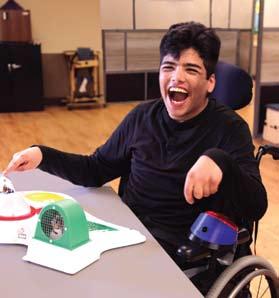
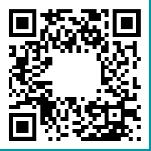
April 2024 | Rockland/Bergen Parent 27 ������� ���������������������������� ����������������������������������������������� ������ �� �� �� ������������ archery lake swimming tie dye boating fishing campfires and smores much much more low staff ratios experienced leadership social facilitation dietary accommodations challenge by choice programs lots of visuals Find The Perfect Toy For Loved Ones With Special Needs • Switch Adapted Toys • Musical Instruments & Devices • Bead Chains & Sensory Play • Rewarding Toys (Lights, Music, Vibration) • Adapted Plush • Inclusive Toys & Games Visit us on the web at www.enablingdevices.com. Phone 914-747-3070 • Email sales@enablingdevices.com Enabling Devices is a family-run business that designs, manufactures and sells assistive technology that makes life easier and more joyful for people living with disabilities.
AUTISM
Steps to take if you think your child is on the spectrum
BY EMILY LEVY
Many parents have that ‘a-ha’ moment when they realize their child may have a more profound challenge than previously expectant. Unlike your friend’s kid at the same age, your child has trouble maintaining friendships, struggles to communicate, or demonstrates repetitive body movements. Perhaps they have difficulty relating to the world around them and seems inflexible with their thoughts and behaviors. If you notice these characteristics, don’t ignore them. While your child could be delayed, it may be wise to seek a professional opinion and check if your child may be on the autism spectrum.
Learn the Milestones
Many children with autism show developmental delays early on and don’t meet typical milestones. For instance, by 6-9 months, most babies can sit up without support, babble sounds, and respond to their name. By 9-12 months, babies typically grab objects and toys, crawl, and stand independently. Most children can walk independently between ages 1-3, climb stairs, jump, stack objects, speak in short sentences, and follow basic directions. Between ages 3-5, children can typically toss a ball overhand, get dressed independently, and draw a full person with all features. Children ages 6-12 generally have developed strong friendships with peers and are usually independent in completing their school work. If you notice delays or regression in any of these milestones and your instincts tell you something is off, your child may be at risk for autism.
Identifying Autism
If you think your child has autism, take action. The sooner you identify and address autism, the better it will be for your family. Speak to your child’s doctor; he or she may inquire as to whether all developmental milestones have been met and may recommend an autism screening. This screening typically consists of a series of yes or no questions regarding symptoms. If your doctor suspects









that your child may have autism, your child may need to have a full diagnostic evaluation by an ASD specialist. Typically, the evaluator will observe your child, ask you as the parent a series of questions, fill out questionnaires, and administer a series of tests to your child. These factors will allow the evaluator to identify whether or not your child may have autism so you can take appropriate action for a concrete diagnosis.
Your Child Receives an ASD Diagnosis — Next Step
First off, don’t panic. There are many resources and a great deal of support available for children with autism, and your child is certainly not alone! However, the earlier you intervene and seek your child’s services, the more gains you will see. Once you receive the diagnosis, which typically includes a full report, read it thoroughly and review the evaluator or doctor’s recommendations. Reach out to your child’s school to let them know about the diagnosis and inquire about creating an IEP (Individualized Education Program) to map out the services your child will receive based on their needs. These services may include special education classroom placement, speech therapy, occupational therapy, behavioral therapy, physical therapy, social
skills groups, etc. Also, learn what you can do at home to help your child, such as creating a set structure and routine and rewarding good behavior. The more you can work as a team with your child’s doctors, educators, and therapists, this will help provide consistent support to your child.
Many children with autism are kind, loving, high-achieving individuals who have countless gifts. With the right support, your child can succeed academically and thrive in life.
Dr. Emily Levy is the founder of EBL Coaching, a tutoring program that specializes in one-onone home and on-site instruction for students in grades preK-12 in NYC, NJ, and Westchester. She is also the author of Strategies for Study Success, a study skills workbooks series emphasizing test taking, note taking, reading comprehension, writing, and executive functioning strategies, and the Flags and Stars Orton Gillingham student workbook series. These books are currently used at schools nationwide. Dr. Levy studied at Brown University and later received her Masters Degree in Special Education and her Doctorate Degree in Education. She has spoken nationwide on research-based methods for teaching students with and without learning disabilities. Dr. Levy is currently the Director of EBL Coaching’s learning centers.
28 RocklandParent.com | April 2024
SPECIAL CHILD
c amp kodiak
200 Kodiak Road, McKellar, Ontario, Canada
905-569-7595
campkodiak.com
info@campkodiak.com
Camp Kodiak is Canada’s premier overnight summer camp for children and teens (6-18 years old) with and without learning disabilities, ADHD and ASD Level 1. Some highlights include: Social skills program, Academic program, 50+ activities, Mature, professional staff, 2:1 camper-to-staff ratio, Leadership program for 16- to 18-year-old campers, Comfortable log cabins with electricity, bathroom with shower. The camp is located 2.5hrs north of Toronto, Ontario. All campers deserve a summer of fun, friends, and success!
c amp SkyWild
Camp Reimagined, 160 Big Pond Rd, Huguenot, NY 12746 734-436-1453
campskywild.org
kristin@campskywild.org
Camp SkyWild is an overnight camp designed for children on the autism spectrum (age 7-17) and their neurotypical siblings
(age 6-13). Their program is new to New York this summer, but their team has been running camps for neurodivergent populations in Michigan since 2013. A traditional sleepaway camp experience complete with cabins, campfires, tie-dye, swimming, and archery, its low staff ratio and flexible but structured program optimize camper success.
Westchester School
45 Park Avenue, Yonkers, NY 33 Seymour St., Yonkers NY 520 Route 22, North Salem, NY 914-376-4300
westchesterschool.org
The Westchester School is a New York State approved, nonpublic school that provides educational and therapeutic services to students from Long Island, New York City, the Hudson Valley, and Connecticut. With campuses in Yonkers and North Salem, NY the program provides services to over 300 students with the classifications of Autism, Intellectual Disability, Multiple Disabilities, Orthopedic Impairment, Other Health Impairment, Emotional Disability, and Preschool Student with a Disability.

•
NYS approved and funded non-public school providing therapeutic and educational services to students diagnosed with AU, MD, ID, OHI, OI, ED, & PWD, ages 3 - 21, with locations in Yonkers & North Salem
Ungraded, self-contained classrooms with a student to staff ratio of 12:1:4 & 8:1:2 in SchoolAged classrooms and a ratio of 10:1:2 in Preschool classrooms.
• • C us tomized cla s sr o om ins tr uc tion ba sed on I E P goals, enhanced wit h S MA R T boards, I P ads, and compu ter s in ever y cla s sr o om
• C ounseling, B ehavior al S er vices, O ccupational T her apy, P hysical T her apy, a s well a s S peech and L anguage T her apy
• A s sis t ance wit h t r ansitioning to po s t academic life by pr oviding Vocational and J ob S k ill oppor t unities
• A daptive P hysical Education and a S ens or y R o om


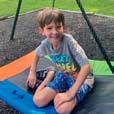
April 2024 | Rockland/Bergen Parent 29
special n ee D s Di R ecto RY | Special Advertising Supplement A Special Camp for Special Kids www.leemar.com 215-658-1708 Camp Lee Mar is a 6 ½ week, private, residential summer program for campers ages 7-21. Our programming offers a unique learning experience that combines traditional camp activities with strong academics, activities of daily living, and speech and social skills development.
a short drive from New York City and Philadelphia, Camp Lee Mar is nestled in the beautiful Pocono Mountains of Pennsylvania. Year after year, both staff and campers return from around the world to spend their summers at CLM. If you are interested in learning more about Camp Lee Mar you can either call us at 215-658-1708 during the winter or at 570-685-7188 during the summer. Email us at Ari@leemar.com ww w.wes tc hes ter sc hool.or g
914 - 376 - 4 3 0 0
Only
The Westchester School
ASSEMBLY MEMBER Ro�ne�s� Bich��e Hermely�
on politics, maternal health for Black mothers, raising her toddler, and being thankful for a strong support system
BY DONNA DUARTE LADD & MIA SALAS
On a cozy cover shoot day at The Soft Space by Mama Glow in Brooklyn, the New York Family team and our cover mom relished in the light that danced into this gorgeous space while enjoying music, chatter, and staying out of the way of an active 17-month-old toddler running about while nibbling on his lunch.
Our focus this day was on his mother, Rodneyse Bichotte Hermelyn. Rodneyse serves as the Assemblywoman for New York State’s 42nd Assembly District. She is also the Brooklyn Democratic Chair, making her the first woman and first Black woman to hold this position. She is also the first Haitian American woman elected in NYC.
Yes, she is as impressive as she sounds. While Rodneyse diligently serves her community as their representative, she also focuses on a cause dear to her heart—advocating for Maternal Health and combatting the maternal health crisis that is adversely affecting minorities.
About eight years ago, Rodneyse experienced a pre-term pregnancy loss. Although the loss came down to many factors, the key one was that maternal healthcare, healthcare transparency, and access to providers who put both mothers and their babies first was severely lacking.
Rodneyse was high-risk and had several complications, some of which were not detected or not properly communicated, leading to her being rushed to a Manhattan hospital where she was told the only solution was to terminate her baby. “I wanted the doctors to do everything they needed to save me and my baby,” she said.
Eventually, Rodneyse delivered her child, Jonah, at another hospital, where he lived for less than two hours. “It was probably the saddest day of my life,” she explained. “That’s
when I decided to focus on maternal healthcare bills.”
And she did. Rodneyse drove the “Jonah Bichotte Cowan Law” in her son’s name, which establishes requirements for treatment when an expecting mother comes to a hospital with concerns about pre-term labor.
Now, after a healthy and safe pregnancy, Rodneyse and her husband, Edu, are parents to beautiful 18-month-old Daniel.
Rodneyse continues to advocate for maternal healthcare and more. And she does all of this while studying for a law degree!
Read on to learn about Rodneyse’s creative career journey, raising her son, childcare when legislating, a supportive husband, and more.
NYF: Before entering public service, you were a public school teacher, an engineer, and an investment banker. What made you decide to enter politics?
RBH: Joining then US Senate candidate Barack Obama’s campaign in Illinois in 2004 was my first taste of local politics. As an Obama Operative, I rallied Democrats while finishing up my MBA at Northwestern and working full-time at Lucent Technologies as an engineer. Shortly after having moved back to New York City in 2005 and having worked as an investment Banker on Wall Street at the height of the Financial Crisis, I took a turn in a different direction after being reintroduced to local politics and reigniting my desire to uplift communities.
This time, it was in my hometown of Brooklyn, helping a state senator Kevin Parker in 2008. After being laid off, I had an epiphany and decided it was my calling to serve as a voice for my community. It was the teacher in me that understood the need for building our public school system; it was the engineer in me that wanted to push STEM programs for city school students while encouraging minority and women-owned business opportunities, it was
my ability to work with numbers that helped my data analytics in assessing my run for office.
NYF: You recently took the bar exam; what is the commitment to using your legal education in your work?
RBH: My constant learning throughout my career allowed me to be a better legislator and understand and address pressing, complex issues.
Law School was a massive undertaking, but I am committed to serving vulnerable and protected classes of people in the courtroom, especially as it relates to Civil Rights, constitutional law and immigration law. I am interested in using my engineering background in construction law as well. I also want to be a better legislator in the way I write bills and debate them on the floor. And as Assembly Majority Whip, I have a responsibility to ensure bills get passed through.




After losing my son and having been mistreated by the hospital, I decided that a legal education would allow me to advocate for many in the courtroom.
NYF: Can you explain the “Jonah Bichotte Cowan Law” and the protections it provides?
RBH: It provides protection and rights for all expectant mothers in New York to have their medical concerns taken seriously and the hospital of their choice to admit, diagnose, and treat expectant mothers in emergency situations.
More specifically, it establishes requirements for treatment when an expectant mother presents at a general hospital with concerns about being in preterm labor. This law ensures that, first, mothers are informed that they are going into early labor and of the associated risks, and secondly: these hospitals must care for high-risk pregnancies.




The law is named in memory of my late
30 RocklandParent.com | April 2024




faces the same unfortunate narrative of a high-risk pregnancy and mistreatment at the hands of medical professionals, and now it’s prevented through law in New York.
NYF: You are no doubt super busy. How are you ‘juggling’ a toddler and career? What does your support system look like?
To say I’m busy is an understatement! I’m fortunate to have a great support system--my super-supportive husband (who also works) and a nanny help balance childcare when I’m in my District in Brooklyn. Up in Albany, the Assembly is full of new moms in office, and Assembly Speaker Carl Heastie has been immensely helpful in providing childcare resources when we’re legislating.



I know that it’s incredibly tough out there for many moms who lack these resources, and are trying to hold down a job while struggling to afford help. I am always advocating to make childcare more accessible, including co-sponsoring the “universal child care act” which would make free childcare accessible for all New Yorkers
NYF: Lastly, let’s talk about your adorable 18-month-old Daniel. How’s the experience of being a mom?



son Jonah Bichotte Cowan, who passed after I was turned away from a hospital I rushed to in early labor. After discovering I was dilating at 3cm, I was notified of the worst news an expectant mother can receive - both me and my unborn baby were in an incredibly fatal and high-risk situation. Knowing the risks associated, the Doctors at one Hospital discharged and forcefully released me, citing “hospital policy.”


I was then rushed to another hospital in Brooklyn. They took me in, and their doctors were culturally competent. They understood my situation and tried their best to help. Although they were not able to save Jonah, the stark difference between their care and how I was denied treatment at a well-regarded corporate hospital highlighted the need for legislative action.

One in 10 families across the country
RBH: The experience of being a mom is unmatched. I am filled with joy and gratitude every day when I wake up to see my little boy growing healthy and very happy. I am also blessed to have avoided complications during birth and post-postpartum depression. I thank God for my health, my cherished son’s health and my husband’s.
Helpful to New York Mothers
Both Mayor Adams and Governor Hochul have recently taken significant steps to reduce maternal and infant health inequities in New York City and the State by providing critical resources to new families.
Mayor Adams announced a citywide expansion of the doula program, the expansion of a Midwifery Initiative, and the expansion of a maternal health care services program.
Gov. Hochul introduced a six-point policy plan (I proudly spoke at her announcement at Wyckoff Hospital, where my son Daniel was born and where I lost Jonah) and legislation to expand access to high-quality prenatal care, reduce costs for mothers and families, fight postpartum depression and support infants in the first months of their lives.
This interview has been edited for brevity and clarity, please visit newyorkfamily.com to read the story in its entirety.
April 2024 | Rockland/Bergen Parent 31
Photo by Yumi Matsuo
calendar
By ShAr A levine
r ockl A nd
taylor Swift party
When : Thursday, April 4, 3 – 5 pm
Where : Nyack Library, 59 South Broadway, Nyack
AgeS: 7 and older
WhAt: Make friendship bracelets and sing karaoke to some of Taylor’s best songs that you know all too well.
WAnt to go?: Free. (845) 358–3370, nyacklibrary.org
Solar eclipse event
When : Monday, April 8, 2 – 7 pm
Where : Haverstraw King’s Daughters Public Library, Main Branch, 10 West Ramapo Road, Garnerville
AgeS: 5 and up
WhAt: Get ready for the solar eclipse with fun activities for all ages.
WAnt to go?: Free. (845) 786–3800, haverstrawlibrary. org
eclipse viewing at bear mountain
When : Monday, April 8, 2 – 4 pm
Where : Bear Mountain State Park, Palisades Parkway or Route 9W, North bear mountain
AgeS: All
WhAt: Bring your lawn chair to learn about eclipses and to view this rare event.
WAnt to go?: Free. parks. ny.gov
minas
When : Saturday, April 13, 7 pm
Where : Rockland Conservatory of Music, 45 S Main Street, Pearl River
AgeS: All
WhAt: Orlando Haddad and Patricia King Haddad offer a Brazilian-inspired mix of classical, samba and jazz.
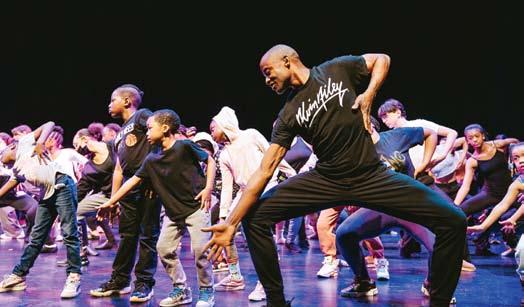
WAnt to go?: $20; free for ages 17 and younger. (845) 356–1522, rcmny.org
SpringFest Street Fair
When : Sunday, April 14, 10 am – 5 pm
Where : Downtown Nyack, 100 Main Street, Nyack
AgeS: All
WhAt: Kick off street fair season with live bands, great food, and hundreds of vendors offering unique crafts, jewelry and more!
WAnt to go?: Free. (201) 410–5416, nyackchamber.org
Settoga 365: pre- passover concert with matty rox
When : Sunday, April 14, 1 –2:30 pm
Where : Camp Settoga, 127 Call Hollow Road, Pomona
AgeS: 2-10
WhAt: Get ready for Passover at this high energy family friendly concert featuring children’s music performer Matty Roxx, crafts, and good
old fashioned camp fun. WAnt to go?: $36 per family. mmjccm.org
earth day celebration
When : Saturday, April 20, 10:30 am – 3 pm
Where : Trailside Museum and Zoo at Bear Mountain State Park, 3006 Seven Lakes Drive, Bear Mountain
AgeS: All
WhAt: Enjoy nature-related displays & activities and make treats for the Black Bears.
WAnt to go?:
Suggested donation of $1. trailsidemuseumsandzoo.org
earth day celebration
2024
When : Saturday, April 20, 11 am – 3 pm
Where : Hudson Highlands Nature Center Outdoor Discovery Center, 120 Muser Dr., Cornwall
AgeS: All
WhAt: Celebrate Earth Day with interactive activities &
games, live music, nature play in grasshopper grove, live animals, and more.
WAnt to go?: $15 per car load in advance; $20 at the door. 6 people max per car. hhnaturecenter.org
earth day hike at harriman State park
When : Sunday, April 21, 10 am – 2 pm
Where : The Nature Place Day Camp, 285 Hungry Hollow Road, Chestnut Ridge
AgeS: 3 and up
WhAt: Explore the trails in the West Mountain area of Harriman State Park, one of the most beautiful sections of the park with groves of mountain laurel, great vistas, and historic trails.
WAnt to go?: $30. (845) 356–1234, thenatureplace.com
Suffern Street Fair
When : Sunday, April 21, 10 am – 5 pm
Where : Suffern Street Fair, Lafayette Ave. Suffern
32 RocklandParent.com | April 2024
Learn from Alvin Ailey dancers at Ailey day at n JPAc on April 6.
AgeS: All
WhAt: Bring the family out for a day of fun with live music, food, craft vendors, face painting, balloon artist booth, and a kidz zone featuring a bounce house, corn maze, and a slide!
WAnt to go?: Free admission. suffernchamber.org
colonial blacksmithing
When : Saturday, April 27, 10 am – 4 pm
Where : Fort Montgomery State Historic Site
AgeS: All
WhAt: Travel back in time with ocal master blacksmith Tom Hunt when he uses 18th century tools and methods to fabricate items such as those used here in 1777!
WAnt to go?: Free. parks. ny.gov
Bergen
Seahorse hotel
When : Sundays – Fridays, 10 am – 6:30 pm, Saturdays, 10 am – 8 pm, through April 1.
Where : SEALIFE New Jersey at American Dream, 1 American Dream Way, East Rutherford
AgeS: All
WhAt: Check in to the Seahorse Hotel and to meet these incredible animals, learn all about them, and how you can help keep them safe.
WAnt to go?: Admission starts at $28.99. visitsealife. com
perfect pets
When : April 4-11, Thursdays, 3 – 5 pm.
Where : Flat Rock Brook, 443 Van Nostrand Ave., Englewood
AgeS: Ages 6-9
WhAt: What makes wild animals and domesticated animals different? Find out how during this program that will include a hike to look for wild animals as well as activities and crafts.
WAnt to go?: $20. flatrockbrook.org
Ailey day
When : Saturday, April 6, 9 am – 1:30 pm
Where : NJPAC
AgeS: All
WhAt: This full day of dance immersion features a variety
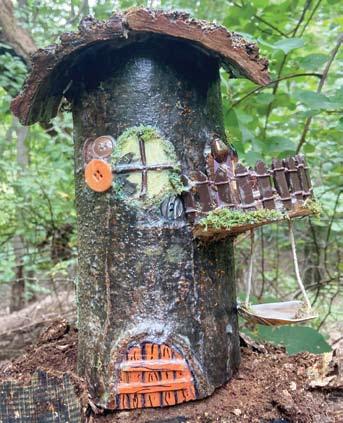
of movement classes taught by professional artists and welcomes dancers of all skill levels and people of all abilities. WAnt to go?: Free. njpac.org
the great eclipse
When : Monday, April 8, 10 am – 5 pm
Where : Liberty Science Center, 222 Jersey City Blvd., Jersey City
AgeS: All
WhAt: Experience this phenomenon with special activities, adventures, exhibits, and more.
WAnt to go?: $27.99-$30.99. lsc.org
iluminate
When : Friday, April 12, 8 pm
Where : Bergen Performing Arts Center, 30 N Van Brunt St., Englewood
AgeS: 5 and up
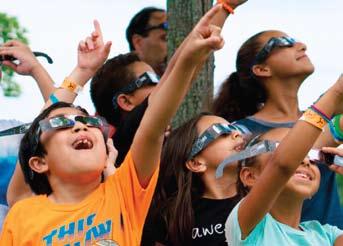
WhAt: This mind-blowing, multi-sensory experience, features cutting-edge technology, energetic music, and phenomenally choreographed dance moves. WAnt to go?: $45-$75. bergenpac.org
community day: game on
When : Saturday, April 13, noon – 5 pm
Where : The Newark Museum of Art, 49 Washington St., Newark
AgeS: All
WhAt: Gear up for a day filled with interactive games, live sports demonstrations, and thrilling competitions.
WAnt to go?: Free. (973) 596–6550, newarkmuseumart. org
brick Fest live
When : Saturday, April 20, 9 am – 5 pm; Sunday, April 21, 10 am – 4 pm.
Where : New Jersey Convention and Exposition Center, 97 Sunfield Ave., Edison
AgeS: All
WhAt: Be amazed by life-sized LEGO models, engage with the most hands-on attractions, build a Guinness World-Record Setting Mosaic, and more!
WAnt to go?: $19.99-$39.99. brickfestlive.com
puppet Show
When : April 20, 11 am & noon.
Where : Bergen Town Center, Route 4 East & Forest Ave. Paramus
AgeS: All
WhAt: Experience an interactive and captivating puppet show for children of all ages.
WAnt to go?: Free. (201) 845–4050, bergentowncenter. com
the magic of making: Fabricating for Fairies
When : Saturday, April 27, 1 –2:30 pm
Where : Tenafly Nature Center, 313 Hudson Ave., Tenafly
AgeS: 4 and older
WhAt: Explore the Fairy Trail and build fairy houses of your very own.
WAnt to go?: $15; $8 members. tenaflynaturecenter. org
April 2024 | Rockland/Bergen Parent 33 APR i L calendar
Make homes for fairies at tenafly nature center on April 27.
check out the April 8 solar eclipse at Liberty s cience center.
Where to See Cherry Blossoms from the Bronx to Peekskill
By SerenA norr
The magic and wonder of spring starts with the first bloom of the cherry blossoms, or sakura. We are constantly in awe of this beautiful Japanese flower. These ornamental trees are said to represent renewal, new beginnings, hope, and promise. However, its viewing time is incredibly short (typically in April-early May). So take a daytrip with the family ASAP and check out these beauties.
harbor island park (Mamaroneck)
Spend a day at this waterfront beach and play area as you soak in views of the cherry blossoms. The park also includes picnic tables, benches, ball fields, a nearby beach, and more. Harbor Island Park, 60-98 Harbor Island Park, Mamaroneck, NY 10543
J harvey turnure memorial park (White Plains)
Enjoy picturesque views of cherry blossoms, along with access to a playground and over four acres of space. This park is also the location of the Annual White Plains Cherry Blossom Festival (date TBA). J Harvey Turnure Memorial Park, 26 Lake St, White Plains, NY 10603.
l asdon park (Katonah)
View the cherry blossoms at this beautiful public park and garden. In addition to strolling the grounds, you can enjoy various spring events. This includes gardening, preschool art and storytime, and much more. 2610 Amawalk Road, Route 35, Katonah, NY 10536
hammond museum and Japanese Stroll garden (North Salem)
Soak in the beauty of the 3.5 acres Japanese Stroll Garden. This includes enjoying meandering paths, ponds, stunning landscape, garden views, and the beautiful cherry blossoms. Opening day is on Saturday, April 6th.

Hammond Museum & Japanese Stroll Garden, 28 Deveau Road, North Salem, NY 10560.
cherry collection, nybg (The Bronx)
Enjoy more than 200 flowering cherry trees with your kids at The New York Botanical Garden. Enjoy the magic of spring from March-May where families can see them bloom in the garden’s beautiful landscape. Additionally, they can be viewed at the Cherry Collection, Arthur and Janet Ross Conifer Arboretum, Enid A. Haupt Conservatory, and at Daffodil Hill. 2900 Southern Boulevard, Bronx, NY 10458.
boscobel house & gardens (Garrison)
Enjoy access to 68 acres of gardens and grounds during your visit to the historic Boscobel House & Gardens. In addition to cherry blossom viewing, they have events for families, landscape tours, and activities for kids. Boscobel House & Gardens, 1601 NY-9D, Garrison, NY 10524.
hastings-on- hudson Sakura matsuri (Cherry Blossom Festival)
The magic of spring is alive in Hastings-
on-Hudson. Held in April (date TBA), this annual community festival celebrates the ‘Kanzan’ cherry trees that bloom in Pocket Park. Additionally, this includes performers and demonstrations, food, poems, and more. Corner of Villard Avenue and Broadway, Hastings-on-Hudson, NY
rotary’s 7th Annual cherry b lossom Festival (Peekskill)
Saturday, May 4th from 10:00am-5:00pm
Celebrate the beginning of spring at The Rotary Club of Peekskill’s Annual Cherry Blossom Festival. Enjoy various children activities, flower paint potting, arts and crafts, face painting, bouncy castle, craft vendors, food trucks, and a book drive. Throughout the space, enjoy viewing 100 cherry blossom trees along the waterfront and walkway. Additionally, proceeds raised by the Rotary Club of Peekskill will go back to back the community, as well as international projects. Finally, admission and parking are free with easy access from the Peekskill train station. Peekskill Riverfront Green Park, 1 Robin Dr. Peekskill, NY 10566
34 RocklandParent.com | April 2024
fAMiLy fun

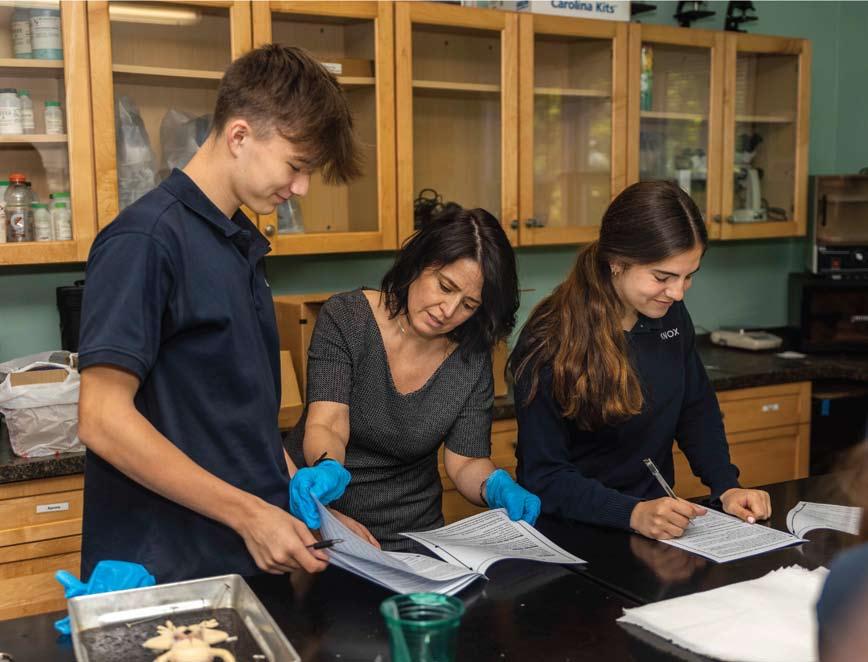
Email:
Email:
Web:
Web:
Web:
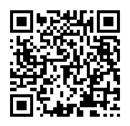
(631) 686-1600 ext 414
Phone:
admissions@knoxschool.org
www.knoxschool.org @Knoxschool LONG ISLAND’S OLDEST ESTABLISHED PRIVATE SCHOOL SPRING OPEN HOUSE Saturday, April 27, 2024 10:00 AM - 1:00 PM register now! UNLOCKING STUDENT POTENTIAL SINCE 1904 Premier Boarding & Day School for Grades 6-12 + PG Phone: (631) 686-1600 ext 414
admissions@knoxschool.org
www.knoxschool.org @Knoxschool LONG ISLAND’S OLDEST ESTABLISHED PRIVATE SCHOOL SPRING OPEN HOUSE Saturday, April 27, 2024 10:00 AM - 1:00 PM register now! UNLOCKING STUDENT POTENTIAL SINCE 1904 Your Journey Begins TODAY! Premier Boarding & Day School for Grades 6-12 + PG Phone: (631) 686-1600 ext 414
admissions@knoxschool.org
Email:
www.knoxschool.org @Knoxschool LONG ISLAND’S OLDEST ESTABLISHED PRIVATE SCHOOL SPRING OPEN HOUSE Saturday, April 27, 2024 10:00 AM - 1:00 PM register now! UNLOCKING STUDENT POTENTIAL SINCE 1904 Your Journey Begins TODAY!

Dr. Krebs is now part of Crystal Run!
People, including children want to be heard, I strive to make them feel that I understand them and that I am listening.”


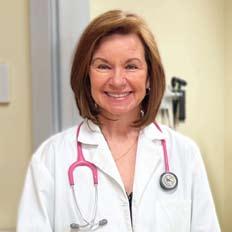
elcomed her staff communityfor
We are thrilled to announce that Crystal Run Healthcare has welcomed Dr. Genevieve M. Krebs, a well known pediatrician, along with her staff and patients. Dr. Krebs has been serving the Rockland County community for over 30 years, and we are honored to have her join our team. Patients of Dr. Krebs can expect to receive the same high-quality, patient-centered care that they have come to expect from her. In addition, they will now have access to extended hours, weekend availability for well and sick visits, and 24/7 emergency access to a pediatrician. At Crystal Run Healthcare, we are dedicated to providing comprehensive care for children from infancy through adolescence, and we strive to educate parents on ways to prevent illness and promote wellness, helping to keep their kids healthy, active, and safe.

Appointments available with Dr. Krebs in West Nyack! Call 845-357-2177 today to schedule an appointment or visit us online CrystalRunHealthcare.com/Krebs
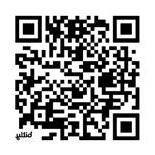

























































































 Marita Smith, DDS
Marita Smith, DDS
















































































